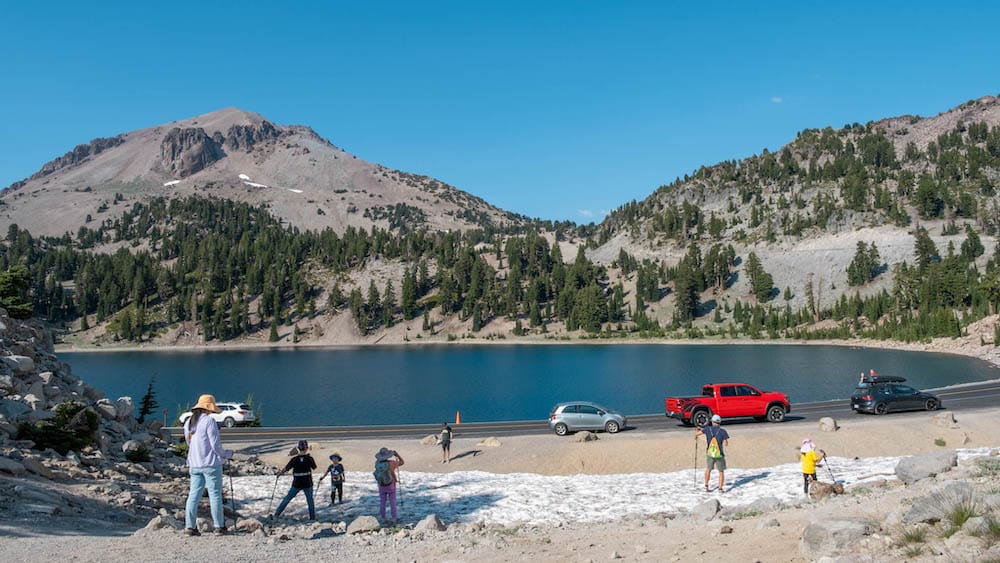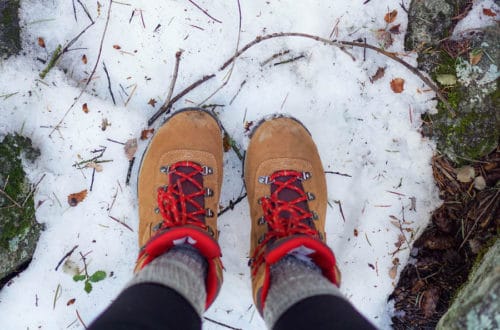
California Car Rental: 7 Easy Tips You Need To Know For Road Trips
Can’t wait to go on your dream California road trip? Don’t get intimated by car rental!
Whether you plan to drive along the scenic Pacific Coast Highway, or up the mountains towards Yosemite, renting a car will definitely help you to explore more of these California gems.
Since I have gone on road trips in California several times using rental cars, I know how it feels to be driving an unfamiliar car in a new environment. As you are exploring your car rental options, here are some tips I hope will help with your planning.
- 1. Plan A California Road Trip That Optimizes Car Rental Cost
- 2. Shop Around For Your California Rental Car In Advance
- 3. Check Car Rental Policies And Extra Fees
- 4. Understand Insurance Options for California Car Rental
- 5. Get To Know California Traffic Rules
- 6. What To Do When There’s An Accident
- 7. Bring Your Own Road Trip Essentials
This article uses affiliate links where I make a small commission if you make a purchase through my links, at no additional cost to you. As an Amazon Associate I earn from qualifying purchases.
1. Plan A California Road Trip That Optimizes Car Rental Cost
First, you need to decide where you want to go and plan a route that is both cost-effective and practical. This will depend on how much you want to drive each day as well as the road trip stops.
Here are additional questions to think about when considering your California car rental options.
How long are you able to drive per day?
Personally, we prefer to keep driving distances per day to 4 hours so that we have time and energy to enjoy each location. If you have multiple drivers, you can consider increasing the driving distance to cover more ground in a day.
Are you comfortable driving at night?
Daylight hours vary throughout the year, with summer being the best season for planning long drives during the day time. If you are not comfortable driving at night, take note of sunset times and plan your schedule accordingly.
This also helps you to decide where to pick your overnight rest stops so that everyone gets enough rest. For example, if you are leaving Yosemite in the evening, it may be a good idea to pick an accommodation just outside the park instead of all the way in San Francisco.
How much time do you want to spend at each road trip destination?
While scenic drives and brief stops at viewpoints can be quite therapeutic, you should set aside time for walking around, taking photos, eating and shopping. There are many unique towns and cities in California that are worth checking out, such as Monterey, Santa Cruz, Carmel-by-the-Sea, and Solvang along the Pacific Coast Highway. You can even opt to stay overnight to maximise your stay.
As for the National Parks, you should plan at least 1 full day to enjoy nature at a slow pace. There can sometimes be traffic congestion in popular parks so it is good to incorporate buffer time to your road trip plan.
Do you need a car for your entire trip?

There are times when it may be better to not drive, especially in busy cities like Los Angeles and San Francisco. With increased risk of car break-ins and difficulty to find parking spaces, people are often advised to use ride-sharing services like Uber or Lyft instead of driving around.
For example, you may be flying in to Los Angeles and plan to spend a few days in the city before heading off to nearby National Parks. In another scenario, you can drive one-way from San Francisco down to Los Angeles and then opt to fly back to San Francisco instead.
In addition, if you are planning day trips from cities like San Francisco, you will probably only need a car for a few hours or a day.
2. Shop Around For Your California Rental Car In Advance
The earlier you shop around for rental car options, the more time you have to weigh all the options.
Read more: How To Choose The Best Car Rental – Turo, Zipcar, Hertz
Where can you get a rental car in California?
You may have heard of the traditional rental companies like Hertz and Enterprise. Have you also heard of car-sharing platforms, Turo and Zipcar? Each of these options have their own pros and cons.
In a nutshell, Hertz may have more comprehensive insurance coverage for your car rental, though are limited in pick-up locations and timing.
Turo and Zipcar are great alternatives to the traditional rental options because it allows you to choose a specific car and have flexibility in pick-up locations. You may even be eligible for early booking discounts on Turo. If you need car rental for just a few hours, you can consider Zipcar for a cheaper option.
3. Check Car Rental Policies And Extra Fees
If you want to avoid surprise charges and fees after the trip, make sure to check your car rental terms of use and adhere to them. Here are some commonly forgotten car rental policies and sources of extra fees.
Make sure to take pictures before and after the trip of the interior and exterior of the car. It will help a lot in case of potential disputes, such as whether certain damage was done by you or another renter.
How many miles can you put on a rental car?
While it is common for traditional rental companies to offer unlimited mileage, do look out for fees on extra mileage when renting with Turo and Zipcar.
If you are numerically inclined, you can check your planned distance and weigh the cost of renting a car with unlimited mileage versus one with cheaper daily rate but also extra mileage fees. Of course, this is assuming similar fuel economy and hence similar gas costs.
What is the Fuel Policy on the rental car?

Most rental cars will require you to refuel back to the original level (usually full) upon returning the car. If you don’t, you may get charged a fee because you are supposed to bear the cost of fuel. However, if they state that gas is included, such as Zipcar, you may need to refuel only when the fuel gauge reaches a certain threshold (like 25%).
Cleaning fees, smoking and pet policies
In most cases, normal wear and tear is acceptable. This includes the inevitable dirt on floor mats and the car exterior. However, these cleaning fees and penalties are meant to deter irresponsible or abusive car use. For example, Turo charges $150 penalty for each of these violations. If you plan to bring pets along, make sure that you have gotten permission to do so.
Different drop-off location fee
This mostly applies to traditional car rental companies that allow for a different drop off location from the place you picked up the car. Although it might seem cheaper to rent a car for fewer days to drive one-way, they usually charge a fee for this convenience. This can cost at least $100, but it may be useful for a one-way trip from Los Angeles to San Francisco (and vice versa).
Read more: The Best Places To Stay In San Francisco For Safety
Extra driver fee and insurance coverage
Make sure to check for extra driver fees or any registration that needs to be done to have the other driver(s) approved for the car rental. This is implemented so that the rental companies can keep track of who their insurance is covering and do a check on their driving license as well.
It’s better to stay on the safe side and just pay this fee if you intend to share the driving. Otherwise, you risk voiding your car rental insurance coverage by going against their terms of use.
Snow chain policy for California rental cars

It is common for rental car companies to exclude the use of snow chains on their vehicles. However if you are planning a road trip to Yosemite between November and March, chances are the authorities may require snow chains on certain roads. Snow socks will also work well for certain cars, like Subaru models.
They usually have this policy in place because of the risk of tire damage if the snow chains are not put on correctly, or if the snow chains are not suitable for that specific vehicle. If you violate their terms of use, you risk voiding the protection plans you purchased with them.
One way to work around this is to take a lower elevation route, or to park outside the park and take a shuttle service in.
Alternatively, your best bet would be to rent a 4WD/AWD SUV that has snow tires. You can also get snow chains from Walmart to keep in your car, and check that you can return them if unused.
- If the roads are in R-1 condition, it is enough to rent a vehicle with at least 2 snow tires (“M+S” rating) while keeping snow chains in the car.
- With R-2 condition, you need AWD/4WD with only snow tires in additional to having snow chains in your possession.
- Finally if it reaches R-3 condition you are required to put on snow chains regardless of vehicle type. In that case, perhaps you are better off changing your travel plans for peace of mind. Do check road conditions and weather forecasts in advance.
4. Understand Insurance Options for California Car Rental
Although adding insurance may be costly, it is good to understand what the coverage means so that you can have peace of mind during the trip. Here are the types of add-on insurance that you can consider for your California car rental.
Damages to the car: Loss or Collision Damage Waiver
Some car rental policies have a default deductible amount that you need to pay in case of any loss or damage to the car. However, if you want to have $0 deductible you usually need to purchase add on loss or collision damage waiver.
This is also especially beneficial if you are going to a city with high risk of car vandalism or theft. If you don’t get anything else, I highly recommend adding this to your car rental.
Damages to others: Liability coverage
In the event you cause damage to other people or their property, additional liability insurance will help to cover this liability. These may include the expensive cars that people drive, their potential loss of income, medical expenses, etc.
It is usually not expensive to add on higher liability insurance, so I also recommend having at least 500k of coverage. If you have high net worth, it’s even more important to get sufficient coverage to protect your assets from potential lawsuits.
Aside from that, some people in California have high paying jobs and expensive property, such that there is a good chance of a big liability claim in case of a serious accident.
Your own injury: Personal Injury Protection
Personal injury protection insurance covers your medical expenses in case you get injured. If you already have travel insurance with medical coverage, you may not need to add this to your car rental insurance.
Sometimes rental companies also bundle this with loss of your personal belongings, but again if it’s covered by your insurance you don’t really need to get this.
5. Get To Know California Traffic Rules
One of my first impressions of driving in California was that people drive really fast here. Many things confused me – like turning right on red and getting used to highway exits.
If you come from a country with very different driving practices, here are some things to expect during your car rental experience in California. When in doubt, check the California Driver’s Manual.
Turning right on red
If there is a red light, you will need to stop first at the limit line. To be clear, you need to be on the right-most lane to make a right turn. Check for oncoming traffic and pedestrians before proceeding with the turn.
However, DO NOT turn right on red if there is a sign indicating “NO TURN ON RED”.
You can also choose to wait for the green light, but people may honk at you from behind if you’re obstructing traffic. There are also some situations where the car on your left is blocking your view, in that case just be extra careful and wait if you need to.
Highway driving speed according to the flow of traffic

In order to join the highway, you will first get on the entry ramp. Use this to accelerate to the speed of highway traffic so that you can merge smoothly.
Although the maximum speed limit on California highways is 65 mph, it is common to see people going at 70 and above. Avoid excessive speeding or you risk getting a ticket especially at the 100 mph range.
The general rule is to go with the flow of traffic, at the speed that is safe for the current weather and traffic condition. You should also not go much slower than everyone else such that you block normal traffic.
Generally, it should be safe to drive within 10 mph of the speed limit. Just remember to keep right or make room on the left lane for people to pass you.
Yielding right of way in roundabouts
You should yield to the traffic in the roundabout, and travel in a counter-clockwise direction. Signalling when you exit helps others to know when they can enter.
Sometimes you have roundabouts with a few lanes. If you are turning right, take the outer lane, and when turning left, take the inner lane. If you are going straight, any lane is fine.
Stopping completely at stop signs
There is a tendency for people to make rolling stops, also known as “California stops”. That means that they don’t stop completely at stop signs, which you are supposed to do.
Before moving off after stopping, remember to check traffic in all directions. Sometimes you get an intersection with flashing red lights. This also means the same thing as a stop sign.
If 2 vehicles reach stop signs at the same time, the one on the right as right of way. When in doubt, wave to let them move off first.
Using center left turn lanes
The center left turn lane is a weird-looking lane that made me confused at first. As the name suggests, it is a lane in the center of a two-way street marked by yellow broken inner and solid outer lines.
You can drive for 200 feet in this lane only for the purpose of making left turns or U-turns. Make sure to look out for cars coming from the opposite direction as this is a shared lane.
6. What To Do When There’s An Accident
Although accidents are the most horrible thing to talk about, we need to be prepared in case it happens.
- Call the police for an official accident report
- Report accident to the rental company within the required time or as soon as possible
- Take pictures of the damage
- Exchange contact and insurance information with the other driver(s) involved
- License plate, vehicle identification number, insurance number
- Name, address, driver’s license number
- Contact details of witnesses and passengers
Do also make notes of the location, weather conditions and time of day. There may be other details that may be important depending on the situation.
7. Bring Your Own Road Trip Essentials
There are many types of car accessories you can bring to make your California road trip experience relaxing even in a rental car.
- Phone holder or mount
- Sunglasses
- USB car adaptor
- Dash cam
- Large water dispenser
Read more here for some extra things to note when packing road trip essentials. You may also want to download offline maps for when you go to more remote locations.
I’m sure you’re excited to plan your road trip. Check out more ideas here!
- Yosemite 2-Day Itinerary: The Best Sights For Weekend Warriors
- How To See Lassen Volcanic National Park: Weekend Itinerary
- 5 Things To Do On The Mount Diablo Summit Drive
- California Coastal Road Trip: Best Places You Need To Stop At
- Only Have 1 Day? Guide To Los Angeles’ Must-See Places
- 10 Must-Go Places In California – An Outdoor Enthusiast’s Guide
- The Best Pescadero Weekend Itinerary for Hiking and Camping
- The Perfect Big Sur Road Trip Itinerary For Best Camping





